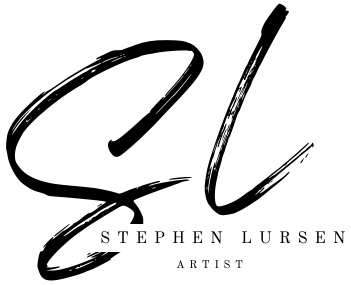Hi! Welcome to today's blog article where I talk about how you can evaluate, consider, and develop your artwork. To begin talking about how to evaluate art in general, you must first have a strong understanding of how to talk about the elements and principles of art and design. Once you can break apart a painting into its core elements and principles, you can critique it alone or in a group and ensure everyone else understands exactly what you're talking about. It also allows you to simplify a potentially complicated image to evaluate the core purpose or message within the art and help edit out the distracting elements. This content is necessary to maximize a work of art's impact and make it stand out in a room filled with competition.

These are the elements and principles of art and design. They are an objective and measurable means of categorizing your work, to justify whether or not a work of art is complete, and helps the artist evaluate what needs to be done throughout the process of making. This knowledge offers a vocabulary to describe and discuss a non-representational work of art that otherwise lacks description.
Ultimately the most important question to answer is this: "Is this painting satisfying to you?" If it is, Great! You're finished! If it is not satisfying to you first, then it is not finished.
"What is the intention of your painting?" Does this work of art fulfill its mission? How can you make alterations to your painting to maximize your work to become a more effective. No two paintings serve the exact same mission. Some intend to offer peace and tranquility, others intend to inspire action, and others intend to sink back into the background like an accessory to a space. There is no wrong intention for a painting, only effective and ineffective executions. I hope you enjoy watching my video!
Happy Painting!
Stephen

Dear Kristian Krawford and Paula Haynes, Thank you for your messages! I appreciate you reading and commenting! :)
About knowing when a piece is finished… well, it’s been my experience that newer artists look at their work and can’t figure out what they did wrong. But really, you may not have done it wrong, but stopped before it was actually finished. Newer artists don’t usually add enough details and because their eyes are still untrained, they just are unable to see it. It is something that comes with time, but eventually your eyes will see that more needs to be added for the piece to be done. This has happened to me anyway….
Hi Stephen! I loved your video. Never realized you are a You Tuber but noticed it on Facebook and fortunately clicked on it! I took one of your classes at the Donna Downey studio last January before the Bob Burridge workshop (I was the one with the horrible cold…I hope and pray nobody caught it!). What is going to make a difference in my paintings is what you said about if you don’t like it then you’re not finished. I can’t tell you how many paintings I have stacked up embarrassed to show off because I don’t like them. It never dawned on me to keep working on them. So thank you very much for sharing. I hope to see you again sometime. Jenni
As I get towards the end of painting each pet portrait, I ask myself “WWSS” – What Would Stephen Say? LOL! I learned so much from you during my lessons with you.
This is a lot to think about and makes a lot of sense. Thank you for sharing.